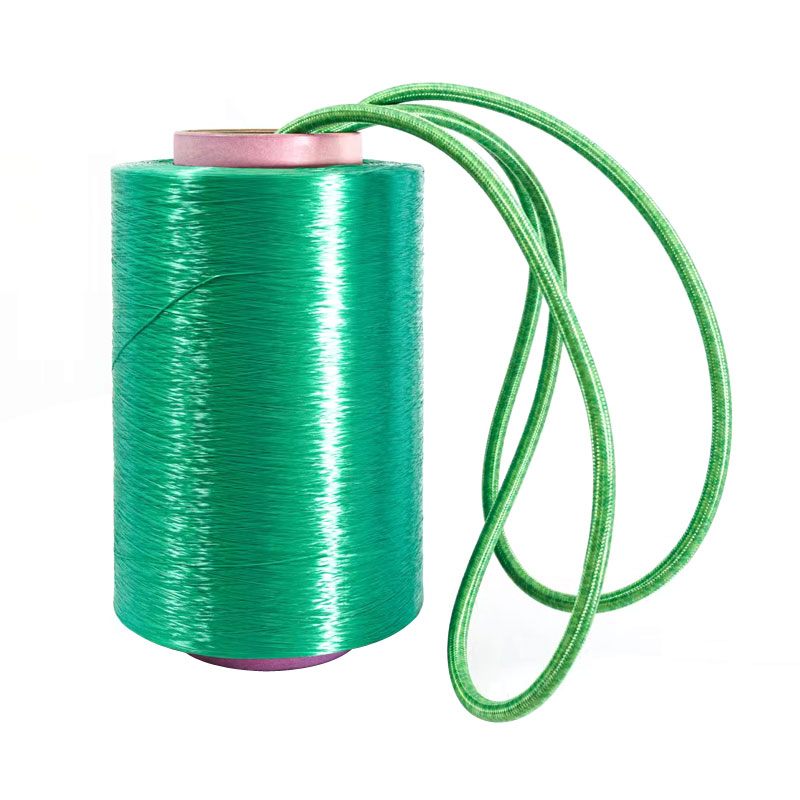What are the different types of polyester yarn?
2024-06-18
Polyester yarn is a versatile and widely used type of synthetic yarn, known for its durability, strength, and resistance to shrinking and stretching. Different types of polyester yarn are manufactured to cater to various applications and textile requirements. Here are some of the main types of polyester yarn:

1. Filament Yarns:
- Fully Drawn Yarn (FDY): Also known as fully oriented yarn, FDY is produced by stretching the polyester filament to its maximum length. It has high strength and is used in applications requiring fine, smooth fabrics like apparel, home textiles, and industrial applications.
- Partially Oriented Yarn (POY): This is a primary form of polyester yarn that is partially drawn and needs further processing like texturing to be used in fabrics. POY is often used as a precursor for textured yarns.
- Draw Textured Yarn (DTY): Made by texturing POY, DTY is crimped and twisted to give it a textured surface. It is soft, durable, and often used in clothing, home textiles, and automotive upholstery.
- High Tenacity Yarn: Designed for applications that require extra strength, such as industrial uses, ropes, and sewing threads.
2. Spun Yarns:
- Ring Spun Polyester Yarn: Produced using the ring-spinning process, this type of yarn is strong and has a good feel, making it suitable for apparel and home textiles.
- Open-End Spun Polyester Yarn: Made using the open-end spinning process, it is coarser and used in applications where the fabric is not in direct contact with the skin, such as denim and towels.
3. Textured Yarns:
- Air Textured Yarn (ATY): Created by blowing air through the yarn to create a bulkier and more textured product. It is often used in sportswear, casual wear, and home textiles.
- Bulk Continuous Filament (BCF): This type of yarn has a bulky texture and is commonly used in carpeting and upholstery.
4. Blended Yarns:
- Polyester-Cotton Blends (Poly-Cotton): Blending polyester with cotton combines the best properties of both fibers, offering durability, breathability, and comfort. Commonly used in apparel and home textiles.
- Polyester-Wool Blends: Blending polyester with wool enhances the durability and reduces the cost while maintaining the warmth and feel of wool. Used in suits, outerwear, and blankets.
- Polyester-Viscose Blends: Combining polyester with viscose results in a soft, smooth yarn with good drapability, commonly used in fashion garments and home textiles.
5. Specialty Yarns:
- Microfiber Yarns: Made from ultra-fine polyester filaments, microfiber yarns are extremely soft and used in high-performance fabrics, cleaning cloths, and luxury garments.
- High-Performance Yarns: These yarns are engineered for specific performance characteristics such as flame resistance, moisture-wicking, or antimicrobial properties. They are used in technical textiles, sportswear, and protective clothing.
6. Staple Fiber Yarns:
- Polyester Staple Fiber (PSF): These are short fibers spun into yarns, similar to natural fibers like cotton. PSF yarns are used in a wide range of textile applications, including clothing, home textiles, and non-woven fabrics.
Summary of Applications:
- Apparel: Clothing, activewear, lingerie, outerwear.
- Home Textiles: Bedding, curtains, upholstery, carpets.
- Industrial: Belts, ropes, filters, geotextiles.
- Automotive: Upholstery, seat belts, airbags.
- Technical Textiles: Protective clothing, medical textiles, sportswear.
Polyester yarns are designed to meet specific needs in various industries, making them one of the most versatile and widely used types of yarns in the textile sector.


